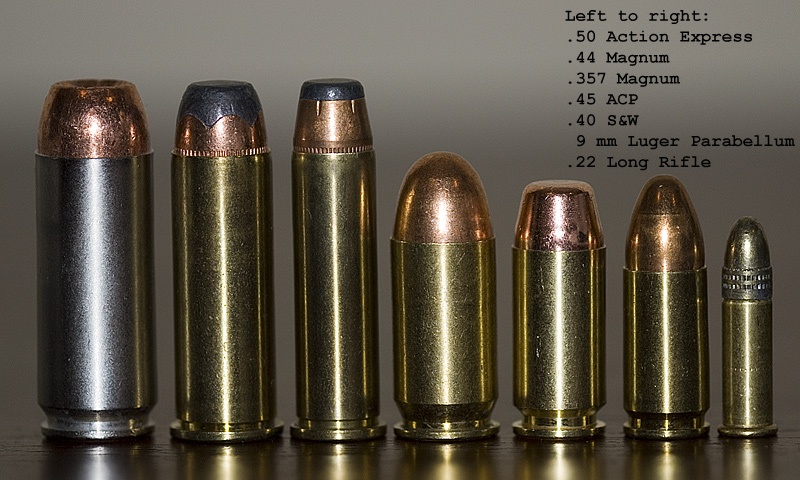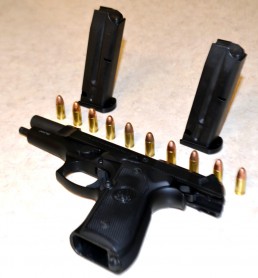parabellum
ZAUF: The Big Three
Since we’ve covered the basic types of bullets, the next logical step would be to discuss the ‘Big Three’ of handgun cartridges.
The ‘Big Three’, as they’re colloquially known, are 9mm Luger (9×19mm Parabellum), .40 S&W (Smith & Wesson), and .45 ACP. Since this is part of our ZAUF series, we won’t go too in depth on each one, but rather cover the basics of each of them.

9mm
9mm Luger is the most popular and widespread of the three. It is the smallest round and the most common bullet masses for 9mm are 115 gr, 124 gr, and 147 gr. The ‘gr’ refers to ‘grain’ (so ‘124 gr’ would be spoken as “one twenty-four grain”), and is a unit of mass. 1 gram is the equivalent of approximately 14.5 grains.
9mm is also the cheapest of the three, currently priced around $0.21 per round for 124 gr FMJ.
Another benefit of 9mm is that due to being the smallest of the three, more rounds of 9mm can fit in a magazine of an approximately equivalent size compared to .40 S&W or .45 ACP. The examples we’ll use are the Glock 17 (9mm), Glock 22 (.40 S&W), and Glock 21 (.45 ACP), since they’re all almost the exact same size. The Glock 17 has a standard capacity of 17 rounds, compared to the Glock 22 and Glock 21, which have 15 and 13 rounds respectively.
From our subjective point of view, the recoil of 9mm feels light but snappy, and tends to cause the muzzle to flip up slightly. It’s easy to shoot out of a typical full sized or compact pistol, but gets a bit harder to handle out of sub-compact pistols.
.40 S&W
.40 S&W rides the line between 9mm and .45 ACP. .40 S&W was based off of the 10mm Auto round, but was made shorter and uses less powder in order to reduce the felt recoil when firing.
.40 S&W typically uses bullet masses of 155 gr, 165 gr, and 180 gr.
.40 S&W costs more than 9mm but tends to be cheaper than .45 ACP. It is currently priced around $0.25 per round for 180 gr FMJ.
As mentioned above, the Glock 22 fits 15 rounds of .40 S&W, compared to the equivalently sized Glock 17 (17 rounds) and Glock 21 (13 rounds).
Using our subjective view of recoil again, .40 S&W has the recoil characteristics of 9mm in that it’s snappy and causes muzzle rise, but it feels as though it has the heavier recoil impulse of .45 ACP. This makes it our least favorite of the ‘Big Three’. While it walks the middle on price and size, it feels as though it takes the worst of both worlds (of 9mm and .45 ACP) when it comes to recoil.
.45 ACP
Finally, the venerable .45 ACP was developed by John Browning in 1904, and is most closely associated with M1911 pistol. Most .45 ACP uses bullet masses of 180 gr, 200 gr, and 230 gr.
.45 ACP is the most expensive of the three cartridges, currently selling for approximately $0.32 per round for 230 gr FMJ.
One of the main complaints of .45 ACP is that due to its girth, less rounds can be fit in a magazine. As in our example of the Glock 17, 22, and 21, the Glock 21 chambered in .45 ACP holds only 13 rounds, as opposed to the Glock 17 and 22, which hold 17 and 15 rounds respectively.
Going back to our subjective recoil analysis, .45 ACP clearly has the highest recoil impulse. However, the recoil characteristics make it feel as if the gun is pushing back towards the shooter rather than flipping the muzzle up. This makes the recoil easy to control which allows for rapid reacquisition of the target. Despite the heavy recoil impulse, the characteristics of the recoil actually make it one of our favorite calibers to shoot.

